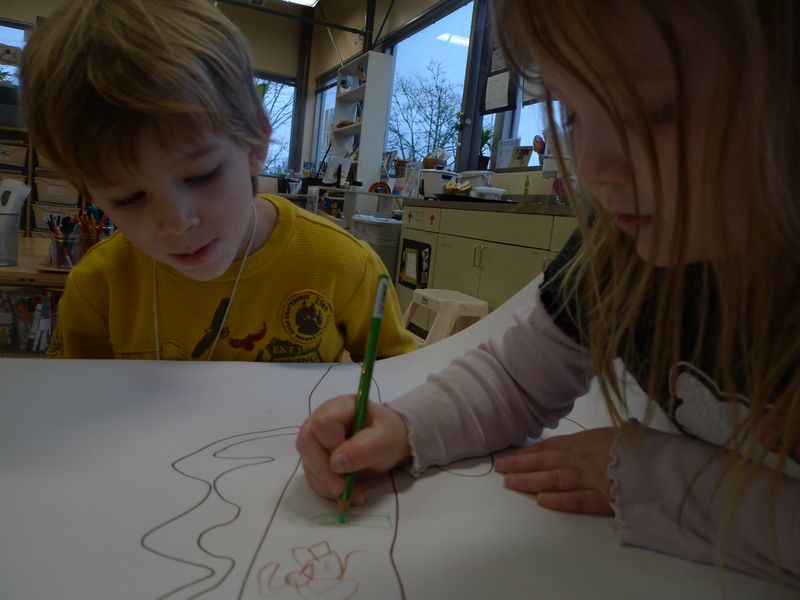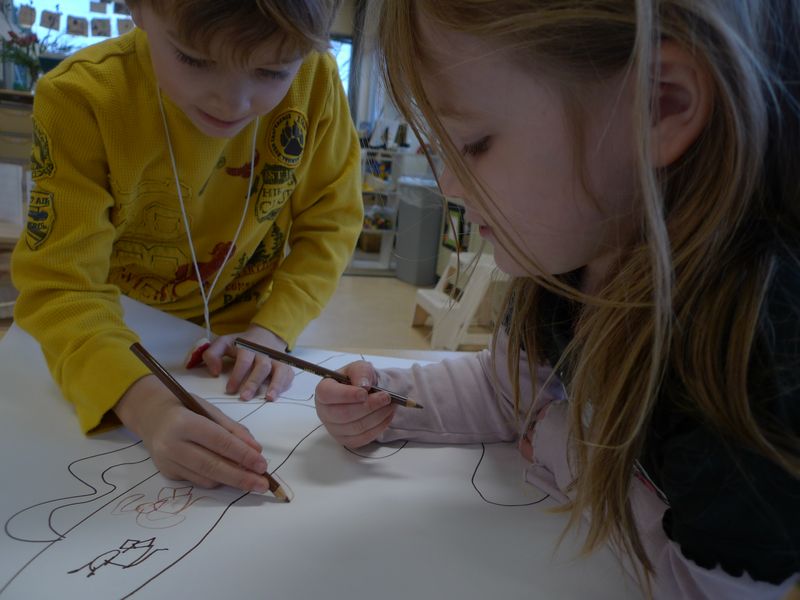Collaborative Learning

One of the guiding principles for teaching and learning at the Opal Museum School is the belief that children are collaborators. No child lives or learns in isolation. A child is always in search of relationships. Children learn and become themselves through interaction and relationships with other people, ideas, objects, and symbols.
Since the beginning of the year we have had an ongoing intention to nurture the children's ability to listen to one another with empathy and understanding. Most recently, we have set aside time for supporting the children to work with a partner as storytellers using a wide array of materials.
We want to give you one window into a collaborative team. This pair had been asked: What story can you find together using markers on a large sheet of paper?
C: (While drawing the rainbow) There was a rainbow, and then there was a river and it was black and then gray and it goes dark again.
K: (Adding on to the river and looking at C while he draws) There was a waterfall and then this little doggie came walking by. It jumped into the water and then at the dark part, it didn't notice but there was a tunnel that goes underground.
C: We will need both an above ground piece and a below ground piece! (She then turns to me asks me to get them another piece of paper, which we attach below the piece with the rainbow on it.)
A little while later, C says, "I'll draw the doggie!"
K: I'll draw the doggie and there can be two doggies. Now you can draw the doggie too! Do you want me to draw the tail or do you?
C: Me, I want to draw the tail.
K watches carefully as C draws the tail sticking outside of the tunnel underground.
K: Here is where the tunnel makes into a little cave. (K says this while drawing a circle around the tail to bring it into the tunnel)

C: So maybe if they go into here they can climb back up and out of the tunnel again.
K: Yeah, that is a little shortcut way!
When we listen and observe moments like this we notice that the children are engaged in using so many of the habits of mind that good problem solvers and thinkers use:
-thinking and communicating with clarity and precision
-gathering data through all the senses
-listening to others with understanding and empathy
-managing impulsivity
-thinking flexibly
-questioning and posing problems
-creating, imagining and innovating
-responding with wonderment and awe/ to feel passionate about learning
Afterwards when asked to reflect on their work together they said:
C: It made me feel happy to work with K. I like how we made a rainbow and then went underground together! He talked to me about it.
K: I also like how we did the tunnel. It looks like a real one. She asked me what we wanted to do, that helped.

